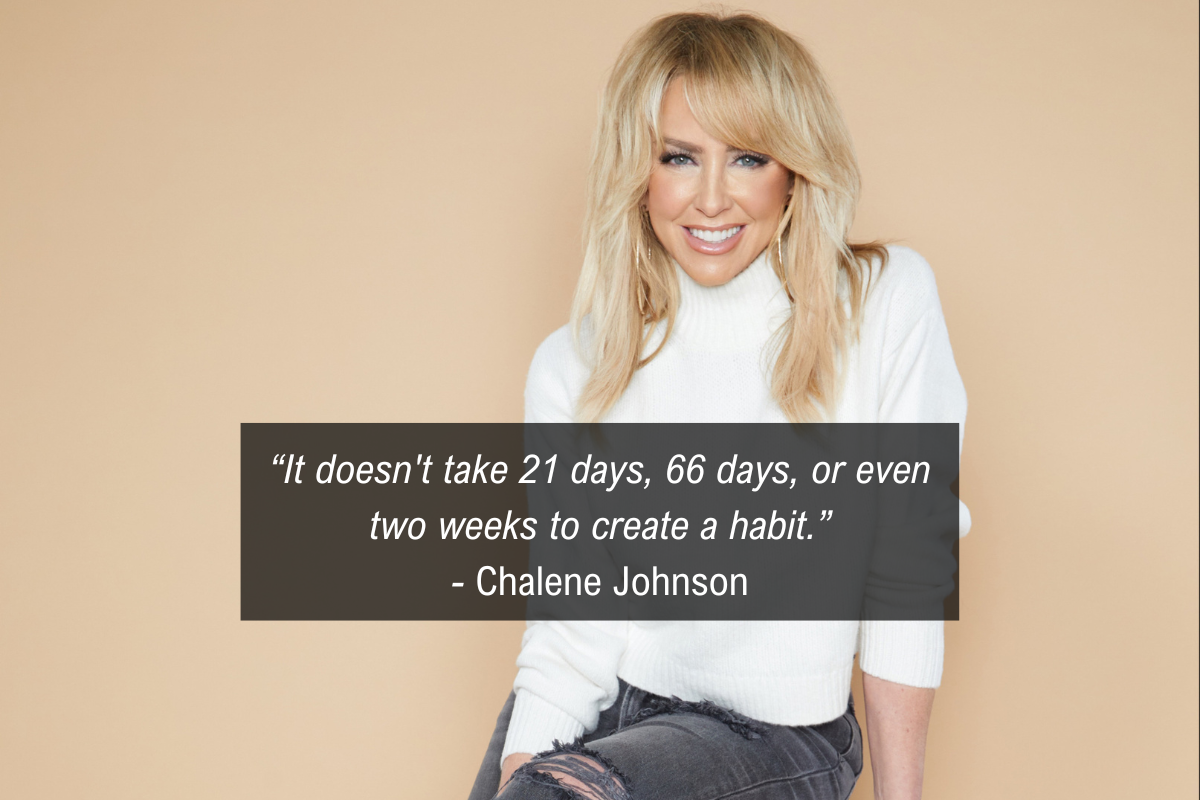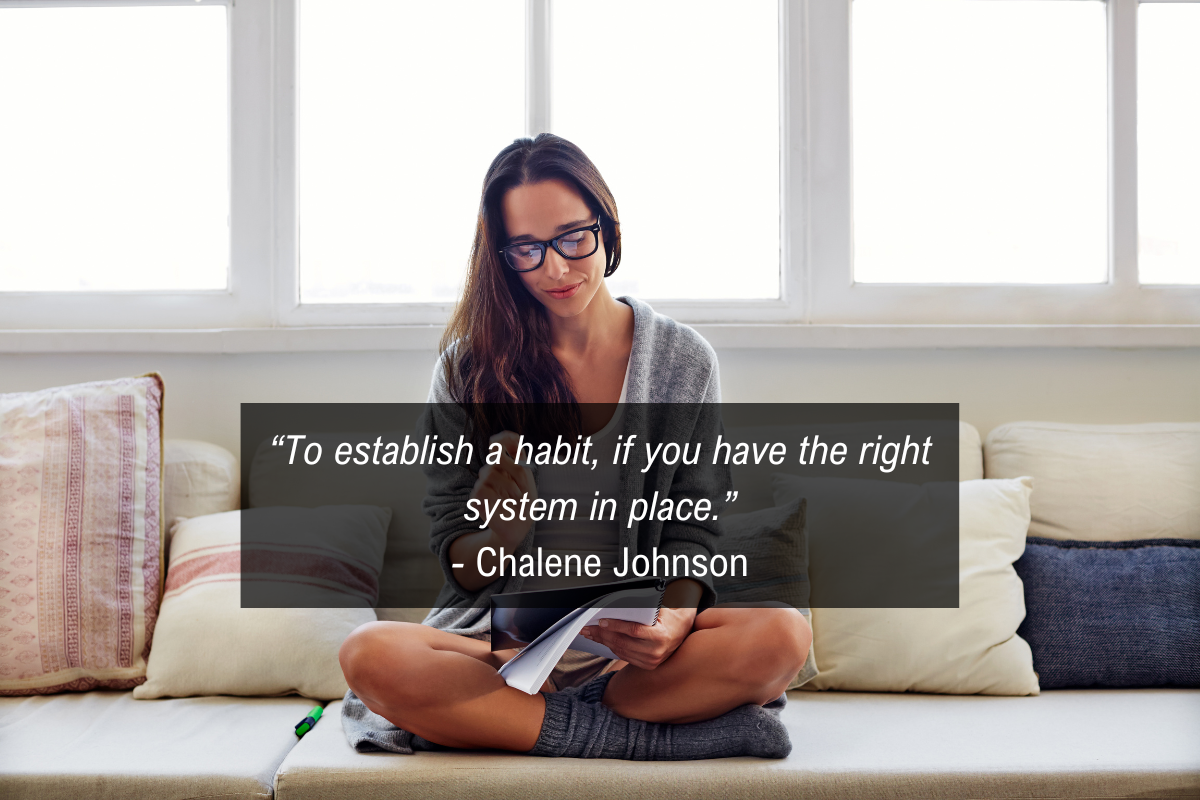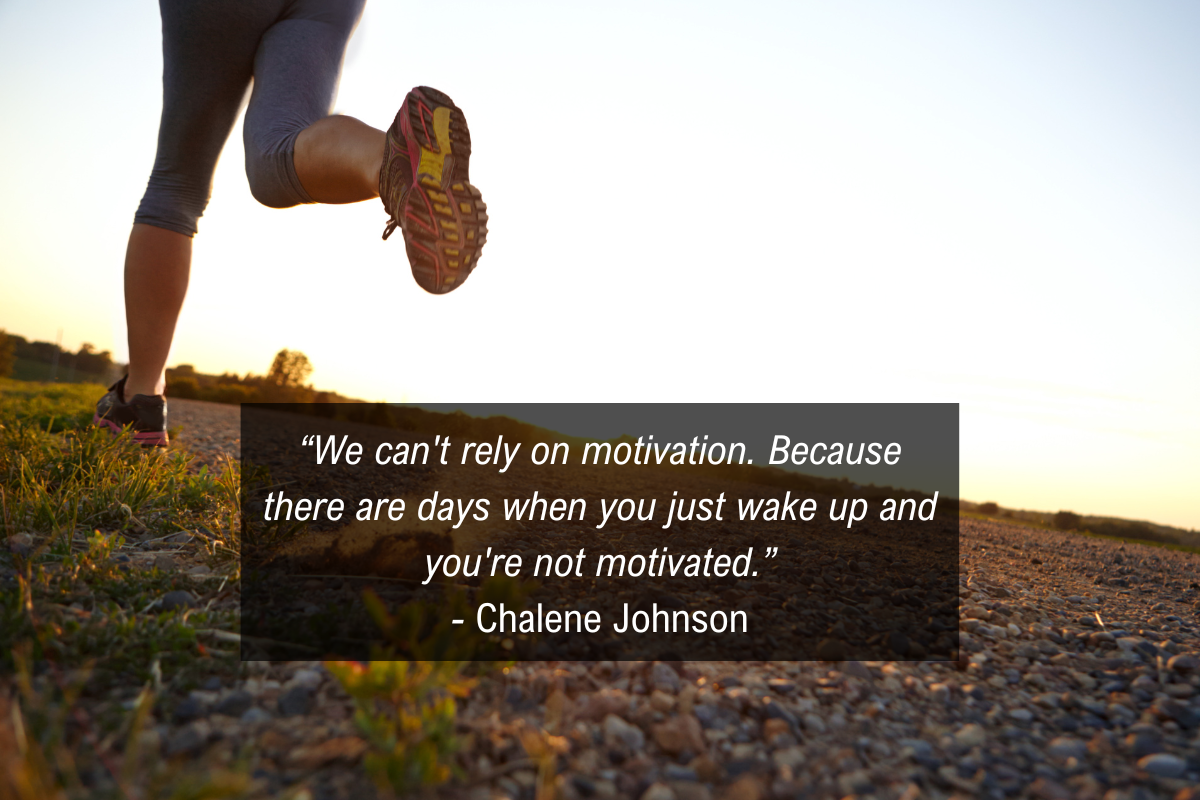Today, we’re not just talking about habits; we’re revolutionizing the way you form them—welcome to a masterclass on habit stacking, habit anchors, and tailored strategies for challenges like ADHD and memory issues.
You know how passionate I am about building habits that actually stick! That’s why you can’t afford to miss episode 1010 of The Chalene Show or catch the visually engaging version on YouTube. Leveraging insights from groundbreaking books like “Tiny Habits” and “Atomic Habits,” we’re diving deep into game-changing tactics that can make a healthy habit stick in less than a day.
So what are you waiting for? Get your favorite cuppa ready and click “continue reading” to delve into a transformative guide that’ll elevate your habit game. Let’s rock habits and change your life, one small step at a time!
Can You Really Create a Habit in Less Than a Day?
The first thing I need to clear up is that it’s a complete myth that it takes ages to create a habit. No, you don’t need 21 days, 66 days, or even two weeks. Seriously, you could build a habit in less than a day. Sounds revolutionary, right?

The Habit Struggles of a Jetsetter
Let’s talk real; we can’t always count on motivation. Motivation is fickle; it comes and goes. But habits? They’re your anchor. You don’t have to remember to brush your teeth; you just do it. You don’t have to force yourself to go to bed; you just do it. Habits make life less chaotic because you don’t have to rely on fleeting things like motivation, discipline, or even memory.
For instance, I’ve noticed that when I’m traveling, I struggle with simple things like drinking enough water. I used to carry around three water bottles at home, a clear cue to drink more. But when traveling, I can’t lug around multiple water bottles, and this messes with my hydration habit. It’s real, guys.
A Deeper Dive into Habit Stacking and Habit Anchors
Let’s get into habit stacking, or what some experts call “habit anchors.” I’m a fan of both BJ Fogg’s “Tiny Habits” and James Clear’s “Atomic Habits.” These books have been legendary for me. Both authors provide some fantastic insights into building habits, but they approach it in slightly different ways.
Mastering Habit Stacking: The BJ Fogg Method for Anchoring New Habits
Habit stacking involves taking an existing habit, like your morning cup of coffee, and attaching a new habit to it. Imagine stretching for five minutes while your coffee is brewing. It’s simple but so effective. BJ Fogg calls this anchoring a new habit to an existing one. And honestly, it’s brilliant and has worked wonders for me.
Decoding James Clear’s 4-Step Formula: Cue, Craving, Response, Reward
James Clear, on the other hand, emphasizes having a “cue” to trigger your new habit. His formula involves four elements: cue, craving, response, and reward. So, not only should you have a trigger for your new habit, but you should also crave it, make it easy to do, and focus on the reward you get from it. Sounds logical, right?
Personalizing Habit Formation
But here’s my twist — as someone diagnosed with ADHD at age 45, habits are both a challenge and a necessity for me. If you have ADHD, you probably get it. Our memory is often shaky, and our focus wanders. The conventional ways of forming habits might not work as well for us. So I had to adapt these techniques to fit my unique brain wiring. And guess what? I’ve been doing a pretty good job with it.

Turning Daily Routines Into Habit Anchors
So, given that object permanence can be a challenge for many of us, a physical or visual cue often isn’t enough. This is where the beauty of habit anchors really shines. You take an activity that you’re already doing daily, like brushing your teeth or putting on your shoes, and anchor the new habit you’re trying to form to that existing activity. For instance, say you’re trying to develop the habit of flossing regularly. You could set up your floss right next to your toothbrush, so you’re more likely to remember to floss after you brush. See what I mean?
The key here is consistency. Once you’ve selected your anchor, stick to it like glue. And it’s important to remind yourself why this habit matters to you, especially when you’re in the early stages of forming it. Is it for your health? To improve your daily life? To get closer to your family? By knowing your why, you’re more likely to make the new habit stick.
Tackling Habit Obstacles One at a Time
Now, it’s easy to get overwhelmed when we’re talking about creating new habits, especially if you’ve got more than one you’re trying to tackle. My advice is to start with just one habit, and once that’s solidified, then you can add another. Trust me, trying to anchor multiple new habits at once is a surefire way to set yourself up for failure. Remember, even tiny habits can have a huge impact over time. The aim is to make your life easier, not more complicated.
Ready, Set, Habit!
Okay, Lifers, I hope you’re as pumped as I am to start putting these habit anchors into practice. The potential for life transformation is unreal. So, grab your Push Journals and start making your two columns.
If you need more guidance, I cover this extensively in episode 1010 of The Chalene Show. Here’s the link: Listen to episode 1010 of The Chalene Show. You can also catch more of my takes on this topic over on YouTube. Watch on YouTube.
Related Links:
For more awesome resources, be sure to check out the following:
- Dr. Russell Barkley on YouTube
- Push Journals and Notebooks
- Atomic Habits by James Clear
- Tiny Habits by BJ Fogg
Stay focused, stay motivated, and let’s make those habits stick!




